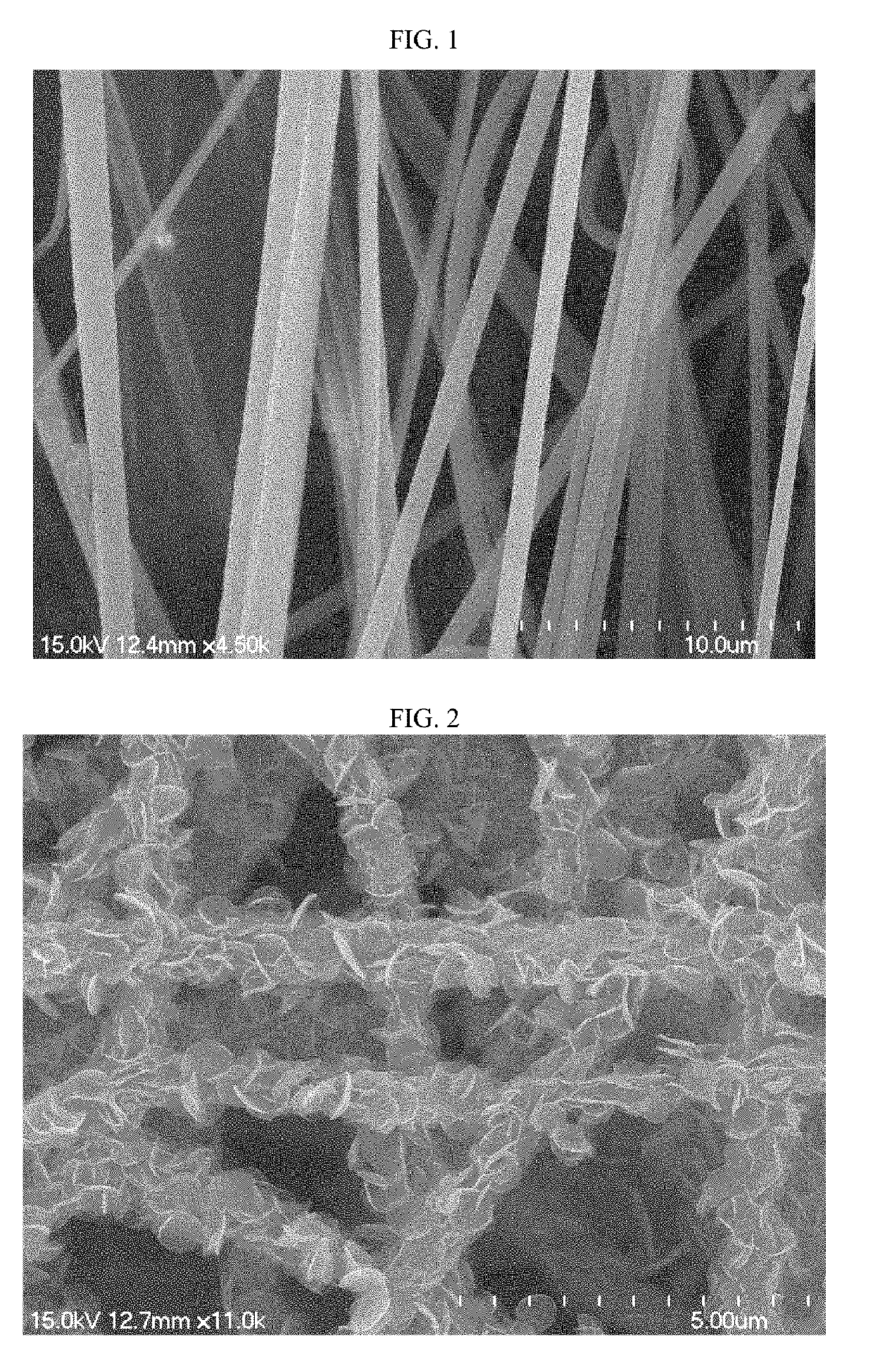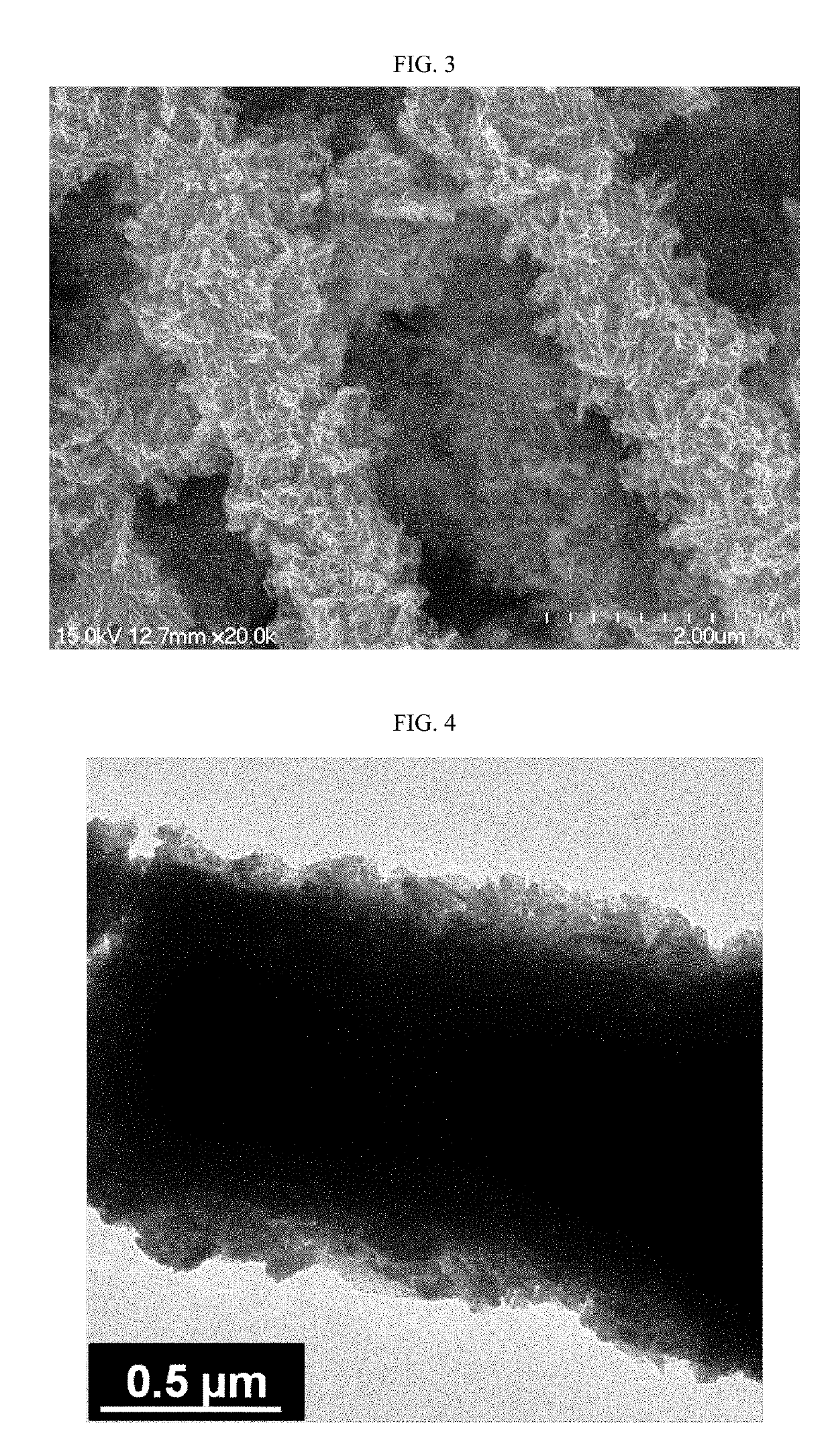Iodine doped bismuthyl carbonate nanosheet and molybdenum disulfide modified carbon nanofiber composites, preparation method and application thereof
- Summary
- Abstract
- Description
- Claims
- Application Information
AI Technical Summary
Benefits of technology
Problems solved by technology
Method used
Image
Examples
example 1
[0027]Preparation of carbon nanofiber membrane. Specific steps are as follows:
[0028]1 g of polyacrylonitrile and 9 g of N, N-dimethylformamide are placed in a 20 ml glass bottle and stirred at room temperature for 5 hours until the polyacrylonitrile is completely dissolved and mixed well. Then the solution is added to the syringe and spun by electrospinning method, get a white polyacrylonitrile fiber membrane. The polyacrylonitrile fiber membrane is calcined for 5 hours at 500° C. with a heating rate of 10° C. per minute under argon protection, finally obtained a carbon nanofiber membrane having a diameter of 0.5 μm; FIG. 1 is the SEM image of carbon nanofibers, it can be seen that the nanofibers with diameter of 0.5 μm distributed evenly and the surface of them are smooth.
[0029]Preparation of carbon nanofibers modified by iodine-doped Bi2O2CO3 nanosheets. Specific steps are as follows:
[0030]0.8 g of bismuth citrate and 0.23 g of sodium carbonate are added to a mixed solution of 30 ...
example 2
[0032]Photocatalytic degradation of Rhodamine B. Specific steps are as follows:
[0033]50 mg of a carbon nanofiber membranes modified by iodine-doped Bi2O2CO3 nanosheets and MoS2 nanoflakes are added to a beaker containing a 50 ml (5 ppm) Rhodamine B solution, kept in a water bath at 25° C., stirred for 30 minutes in the dark, the photocatalyst composite and dye reached adsorption equilibrium, and then open the 300 W xenon lamp irradiation sampling every one minute for UV detection, the Rhodamine B solution could be degraded completely within 5 min. Photocatalyst composite material can be recycled many times, with good stability, the catalytic effect is still good the catalytic effect is still good recycling after 5 times; FIG. 5 is the UV-vis DRS spectra of RhB solution photodegraded by carbon nanofibers modified by iodine-doped Bi2O2CO3 nanosheets and MoS2 nanoflakes; FIG. 6 is cycling of carbon nanofibers modified by iodine-doped Bi2O2CO3 nanosheets and MoS2 nanoflakes photocatalys...
PUM
| Property | Measurement | Unit |
|---|---|---|
| Temperature | aaaaa | aaaaa |
| Temperature | aaaaa | aaaaa |
| Temperature | aaaaa | aaaaa |
Abstract
Description
Claims
Application Information
 Login to View More
Login to View More - R&D
- Intellectual Property
- Life Sciences
- Materials
- Tech Scout
- Unparalleled Data Quality
- Higher Quality Content
- 60% Fewer Hallucinations
Browse by: Latest US Patents, China's latest patents, Technical Efficacy Thesaurus, Application Domain, Technology Topic, Popular Technical Reports.
© 2025 PatSnap. All rights reserved.Legal|Privacy policy|Modern Slavery Act Transparency Statement|Sitemap|About US| Contact US: help@patsnap.com



